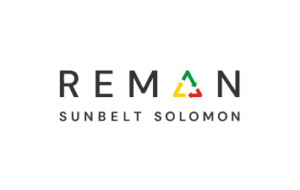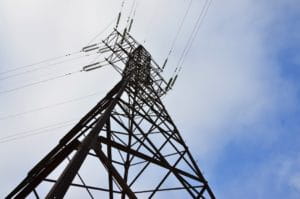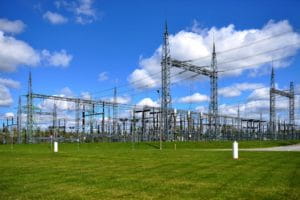
How We Recycle a Transformer
Electrical transformers are essential to electrical systems’ infrastructure, power and function. They transfer energy to electrical circuits to increase or decrease voltage without changing frequency. Though large units, such as a substation, can have a service life of up to 60 years, there may still be a day that they need to be replaced.
Even at the end of their lifecycle, old transformers may be worth a good deal of money as they can be recycled for their commodities. Learn how we recycle a transformer at Sunbelt Solomon and the value of the commodities from these obsolete pieces of equipment.
The Value of Recycled Metal Pieces
The metal recycling market in the United States is currently valued at around $9.2 billion and is expected to increase at a CAGR of 5.4% until 2032. As transformers are made with heavy steel casing and copper or aluminum wiring inside, you can sell the metals to recyclers or a scrap yard.
The size and weight of transformers differ based on their type and the device they were used for, ranging from microwaves to TVs and power supply boxes. While some are about the size of a quarter, others can be as big as a house — the larger units typically come from electric substations and generation plants. With these differences, determining an exact amount of metal you can expect from scrapping a transformer is tricky. However, you will likely get a better price per pound for a copper transformer than an aluminum one.
For over a century, copper has been used as the primary material in wires and electrical devices because it is one of the most conductive materials. With the demand for this metal far exceeding its supply, its cost has spiked. On the other hand, aluminum is approximately one-third the weight and price of copper, but it’s only around 60% as conductive.
Although the prices of these metals are constantly in flux, the cost of copper in October 2024 was $9.40 per kilogram, and aluminum was valued at $2.63 per kilogram that same month. Since October 2023, the cost of copper has increased by 20.12%, with aluminum’s price rising by 21.06%.

5 Steps for Recycling an Obsolete Transformer With Sunbelt Solomon
When you are ready to recycle a scrap transformer, it is vital to partner with a company that will ensure you comply with local and state regulations and reduce your environmental impact. As the industry leader in recycling and sustainability practices for transformers as big as 1,200,000 pounds, Sunbelt Solomon is a reliable partner for dismantling obsolete units.
Our highly qualified team will provide all the equipment and execute a decommissioning plan covering everything from removing and disassembling core components to leaving your jobsite spotless. Sunbelt Solomon offers peace of mind that your equipment will be safely and sustainably managed at the end of its lifecycle. We also provide convenient ways to sell old transformers and surplus parts.
Here are the five main steps for recycling a transformer when working with us.
- Determine the Winding Material
If you want to know whether your transformer is worth disassembling before partnering with Sunbelt Solomon, one way to determine the winding material is to scratch the surface with a steel file. If you see a reddish color, it is likely copper. If it is silver, it’s probably aluminum. It’s important to note that sometimes aluminum wire can look red because of a lacquer coating placed outside the wire.
Regardless of the material, recycling equipment that’s no longer in use is crucial to protect the planet and preserve resources — transformers should never be thrown away. In addition to taking up a significant amount of space if left in landfills, they also contain parts with substances that may be harmful to the planet if not correctly disposed of. Recycling can help avoid waste and prevent these substances from polluting water and soil.
Though they may be worth less, aluminum transformers are still a source of metal and additional materials that we can repurpose or reuse for remanufactured or reconditioned units. Recycling aluminum, copper and steel keeps these metals in circulation and eliminates the need to extract additional resources. Melting down metals from recycled units also typically uses less energy than manufacturing entirely new materials.
- Prepare the Transformer
Before our team begins the teardown process, they’ll closely inspect your jobsite and circuit breakers to ensure they meet all standards and adhere to the necessary regulations and policies. We will then review the decommissioning plan to address safety protocols and ensure compliance with both regulatory and environmental standards.
We’ll then prepare the transformer for teardown by disconnecting it from the grid station circuit breaker and draining the oil.
- Break Down and Remove Components
Once the transformer has been drained, our team will start disassembling external parts, including the insulator, radiator and arresters. Next, they’ll enclose and flush the unit’s tank with nitrogen before cutting its base to reach the internal coil and core for safe removal.
- Sell and Recycle Parts
As aluminum weighs much less than copper, you will get much less in weight if your coils are aluminum. Once again, your transformer’s size will also play a role in determining how much metal we can extract. If your coils are copper, you might get between 150 to 350 pounds, give or take. For their aluminum counterparts, you may get approximately 100 to 250 pounds, but it can differ in some cases.
We’ll purchase the metals and evaluate other parts and components.
- Dispose of Unused Parts
Appropriate disposal is a must for any part of the machine you don’t use or sell, known as e-waste. This term refers to electronics or components you no longer need. Improper e-waste disposal can negatively impact the environment and may threaten human health.
In addition to thoroughly cleaning the jobsite, the final step of our process is to dispose of waste materials we can’t use and any residual oil — safety and environmental responsibility are two of our top priorities. As an EPA-registered recycler, we can responsibly dispose of or recycle electrical parts. When you work with us, you know you have disposed of your transformer’s unused parts much more safely.
Partner With Sunbelt Solomon for Transformer Services
With over 100 years of combined experience, Sunbelt Solomon is a trustworthy partner for your substation teardown needs. Thanks to our comprehensive teardown process that covers everything from preparation and compliance to cleanup and disposal, you can recycle and sell metals and parts hassle-free.
Beyond our teardown and recycling offerings, we are a full-service transformer provider. With us, you can buy, rent, design, repair, maintain and sell transformers. To learn more about our nationwide services, contact our professionals today.






